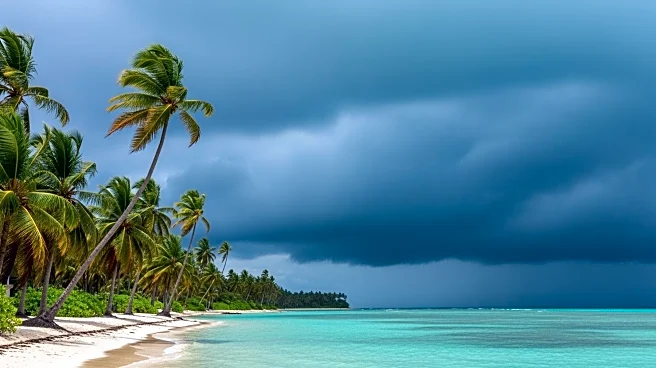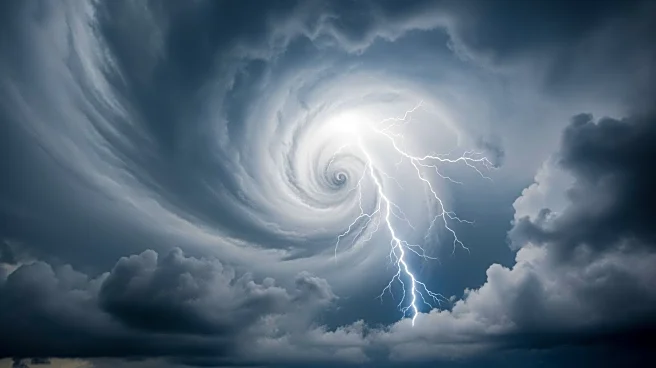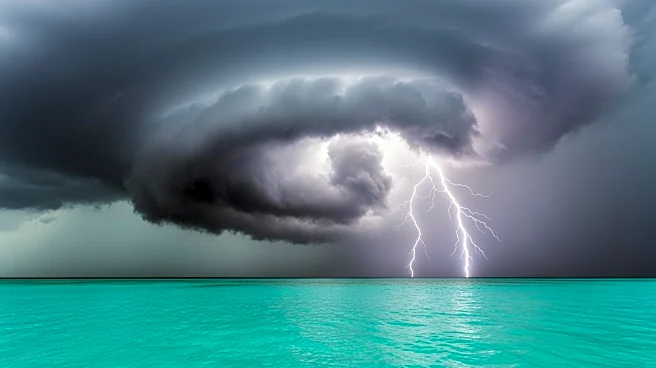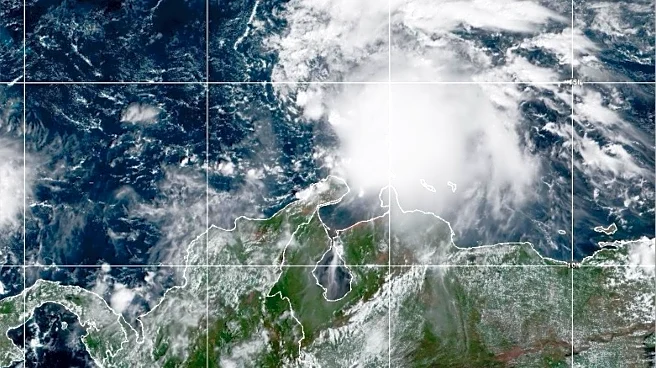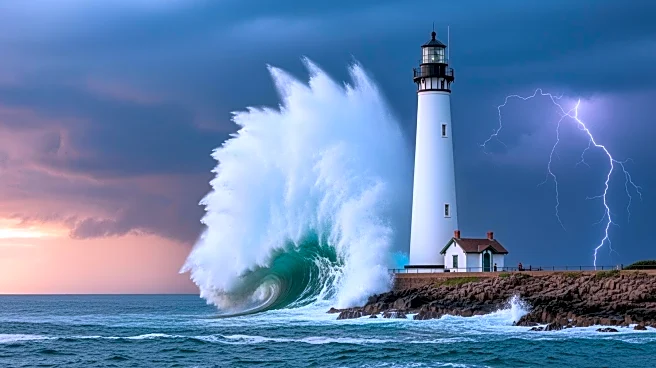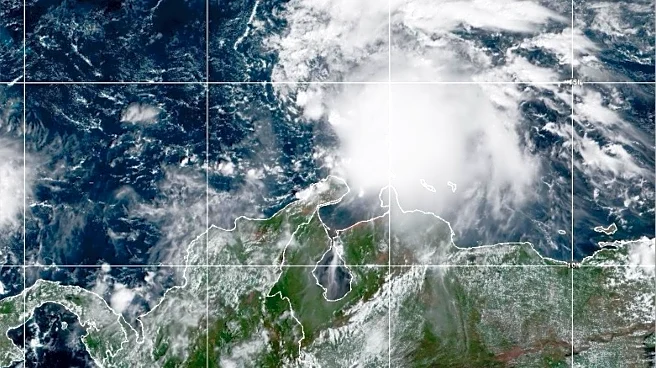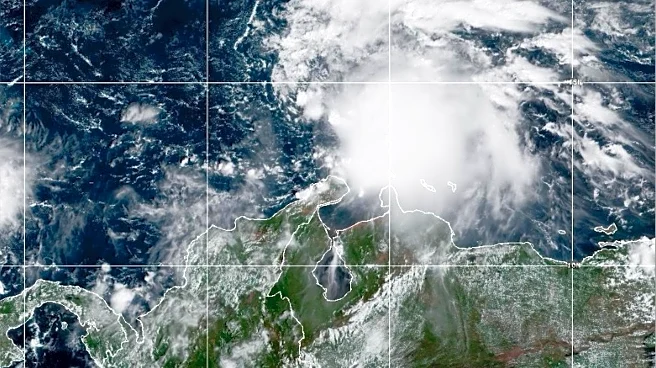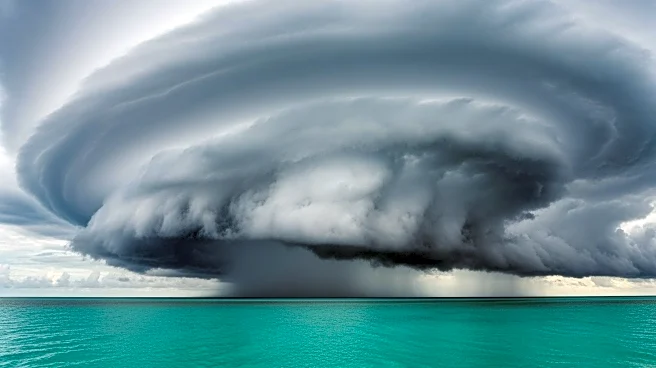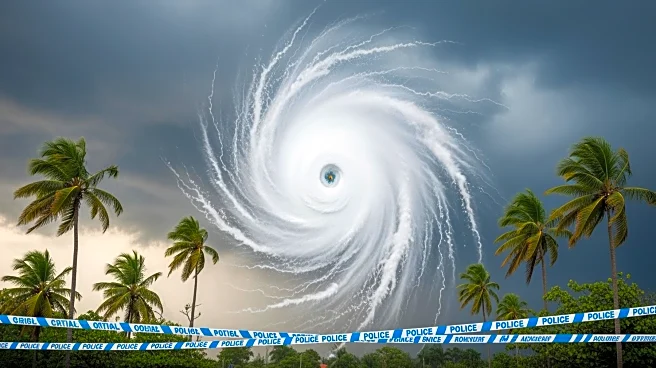What's Happening?
Tropical Storm Melissa is moving through the Caribbean Sea, bringing risks of dangerous landslides and life-threatening flooding to Jamaica and southern Hispaniola. Officials have urged residents in flood-prone
areas to seek higher ground. In the Dominican Republic, shelters have been set up, and schools, businesses, and government agencies have closed in affected provinces. Jamaica has prepared 881 shelters, and schools have switched to remote classes. The storm's core was located about 335 miles south-southwest of Port-au-Prince, Haiti, with maximum sustained winds of 50 mph. Melissa is expected to strengthen gradually and could become a hurricane by Friday and a major hurricane by the late weekend.
Why It's Important?
The potential intensification of Tropical Storm Melissa into a major hurricane poses significant threats to the Caribbean islands, particularly in terms of flooding and infrastructure damage. The slow movement of the storm increases the risk of prolonged exposure to severe weather conditions, which can lead to devastating landslides and displacement of communities. The storm's progression is being closely monitored, as its impact could extend beyond immediate weather conditions, affecting economic activities and public safety in the region. The Atlantic hurricane season has been predicted to be above-normal, and Melissa's development serves as a reminder of the ongoing risks.
What's Next?
Residents in Jamaica, Haiti, and the Dominican Republic are advised to stay informed through updates from the National Hurricane Center and local authorities. Preparations for potential evacuations and securing property should be prioritized, especially in areas prone to flooding. The storm's path and intensity will be closely monitored, with forecasts indicating possible strengthening into a major hurricane by early next week. The situation remains dynamic, and further advisories will be issued as new data becomes available.
